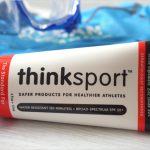
The best & the safest sunscreen ingredients

I have been receiving a number of emails from readers asking me to help them evaluate their choice of sunscreens; most of the questions centered around whether their product of choice offer sufficient broad spectrum protection against UVA and UVB rays. I have actually written an entry regarding the effective active ingredients in a sunscreen but today, I’ll talk about three groups of active ingredients which I consider to be the best for sunscreens.
Zinc Oxide
This is my favorite sunscreen ingredient because it has worked well for me and it is the choice of ingredient used in most of the naturally formulated sunscreens. Sometimes listed as ZnO, this ingredient is a physical blocker in sunscreens and deflect rays like a mirror instead of diffusing them. In certain formulations, this ingredient also leaves an unattractive white cast on the skin but it offers full broad spectrum protection on its own. If your sunscreen contains only Zinc Oxide, my understanding is that the content should be at least 16% to be effective. If the content is lower, it should be combined with other active ingredients and usually, it’s Titanium Dioxide. However, a high amount of zinc oxide can be too drying for some skin type and as such, might lead to breakouts. According to information from the Environmental Working Group, Zinc Oxide is rated to have a moderate health hazard with a rating of 4.
Many sunscreens especially mineral-based ones contain Zinc Oxide. I use Marie Veronique Face Screen Plus which contains 24% Zinc Oxide.
Mexoryl XL & SX
Mexoryl is the trade name for Drometrizole Trisiloxane (Mexoryl XL) and Ecamsule or Terephthalylidene Dicamphor Sulfonic Acid (Mexoryl SX). These two ingredients are developed by scientists at L’Oreal and when used together, provide complete protection against both UVB and UVA rays. As written in my early entry about Mexoryl sunscreens, the two Mexoryl molecules are able to work synergistically with each other and with other sunscreen filters including Avobenzone, Titanium Dioxide and Zinc Oxide to provide full spectrum protection against both UVA and UVB rays. In addition, Mexoryl SX has a low health hazard at level 2 and Meroryl XL has a moderate health hazard at level 4 according to the Environmental Working Group.
For sunscreens containing Mexoryl, you can look at those from L’Oreal, La Roche-Posay, Kiehl’s or Vichy.
Tinosorb S & Tinosorb M
Tinsosorb S is also known as Bemotrizinol (bis-ethylhexyloxyphenol methoxyphenyl triazine) and Tinosorb M is also known as Bisoctrizole (methylene bis-benzotriazolyl tetramethylbutylphenol). These two ingredients are hybrid chemical UV absorbers and reflectors manufactured by Ciba, widely available in European brands of sunscreens, but have yet to be approved by FDA. Tinosorb S is oil soluble while its counter part Tinosorb M is water soluble and both are said to be highly photostable, working as a physical sunscreen and a chemical sunscreen, shielding and protecting the skin. And according to information from the Environmental Working Group, Tinosorb S has no health hazard rating but Tinosorb M has a low health hazard at level 1.
For sunscreens containing Tinosorb, you would want to look at products from Avene, Bioderma, Eucerin, RoC and Uriage.
Summary
Most mineral-based sunscreens or physical sunblocks contain only Zinc Oxide and or Titanium Dioxide. If yours fall under this category, make sure it has sufficient Zinc Oxide. Most chemical sunscreens include a myraid of sunscreen filters. However, the two I’ve covered – Mexoryl and Tinosorb – are considered photostable and offer protection against both UVA and UVB spectrum. Your best bet are using sunscreens containing either of the two groups. Personally, I’ve used chemical sunscreens containing Mexoryl when I’m out under the sun for a prolonged period of time and have found them to be photostable.
Comments
Leave a Reply
You must be logged in to post a comment.

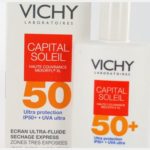
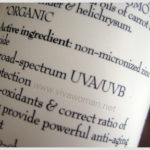








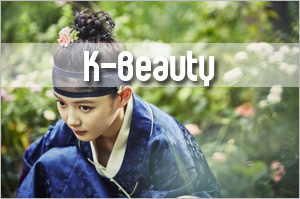
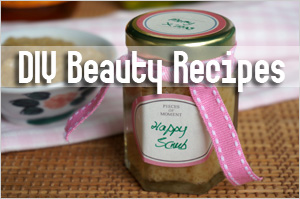
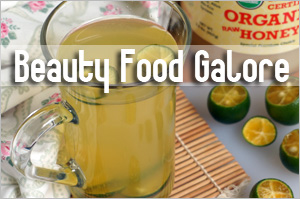
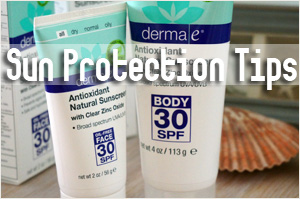
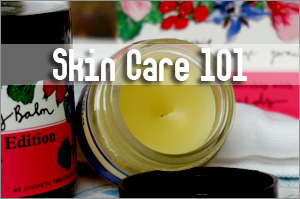
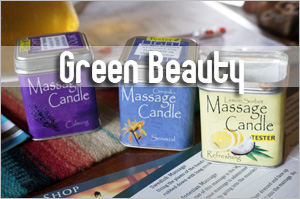
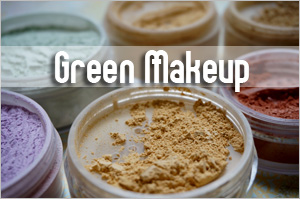
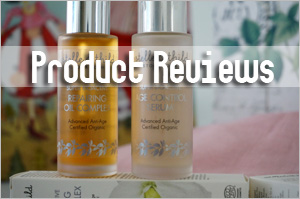
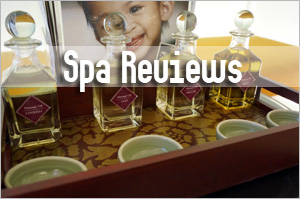
why does there need to be at least 16% zinc to be effective?
The higher the zinc oxide, the more protection it offers. You can look at this table:
http://www.instructables.com/id/Homemade-Sunscreen/step4/SPF-Table/
16% of non-micronized Zinc Oxide should provide an SPF of around 15.
So the Keys Soap Sunblock which is 19% micronized zinc isn’t really SPF 30 as they claim?? According to the table, 19% micronized zinc is less than SPF 20.
I’ve read that some sunscreen ingredients like avobenzone become unstable when makeup is applied. I can’t seem to find a credible source for this claim. Could you please verify this information?
There are other ingredients in their product that might provide sun protection. Some plant oils do provide some level of SPF. I discussed it before here:
https://www.vivawoman.net/2010/04/05/getting-sun-protection-from-natural-ingredients/
The table is an indication of zinc oxide alone so there’s still need to consider the formulation as a whole.
I am only aware of the link between avobenzone and mineral makeup which I discussed here:
https://www.vivawoman.net/2008/03/03/avobenzone-sunscreen-and-mineral-makeup/
Uncoated titanium dioxide (TiO2) and zinc oxide (ZnO) can degrade avobenzone so it is best not to layer non-micronized mineral makeup with an avobenzone containing chemical sunscreen.
The tinted moisturiser (SPF35) I am currently using contains the following ingredients. Are these sufficient?
Fullerene RSâ„¢ã€Titanium Dioxideã€Methylene Bis-Benzotriazolyl Tetramethylbutylphenol (Tinosorb M)ã€Ethylhexyl Methoxycinnamate
It looks very photostable to be because it has Tinsorb M. In addition, it also has TiO2 and Octinoxcate. Looks really foolproof or should I say, “sunproof”!
Thanks for the reply. I used to have minor rashes or in serious cases acne outbreak with products that contains more than SPF20. However, I recently switched to this tinted moisturiser & it has not cause any problem to my skin so far.
Btw, what brand is it? The ingredients is quite clean.
I am using Dr Wu – UV Whitening Cream With Fullerene RSâ„¢ SPF35 PA+++ (Tinted). I bought this at Guardian Pharmacy for SGD49.90.
Oh okay….I was thinking it might be that brand. I’ve seen it around but never examined the product.
“Most mineral-based sunscreens or physical sunblocks contain only Zinc Oxide and or Titanium Dioxide.”~ Does that imply that most sunscreen contains only one of those? I hear Titanium Dioxide is more effective. Any idea about the validity of that?
If yours is a physical sunblock or sometimes called mineral-based sunscreen, it’s likely to contain these two ingredients – either one or both. But some do contain other sun filters.
Titanium Dioxide only provides protection against 50% of UVA rays; Zinc Oxide is definitely more effective.
My friend bought me the La Roche-Posay Uvidea when she was in Japan, and I really like it. All the sunblock in the States is really thick and gooey, so I was so surprised when I tried the Uvidea. It was so liquid-y, and easy to spread. Plus, it has Meroxyl, so I’m not so worried when I have to commute 2 hrs back and forth from home to work in this blazing sun. I may have to switch to something else for the winter since there’s no need to Meroxyl when there’s barely any sun. And its expensive. However, I love this one so much more than the John Masters Organic because I only need to blot my face once to keep the oil at bay if I decide to go out after work. I had to blot my face 3 times prior when I was using the John Masters Organic.
Oh I’m glad you’re liking it! Yes, the texture is very likeable. Never tried thee John Masters Organic one but I imagine it should be rather thick.
I’m currently using a SPF 50+ protective emulsion with UVA of 25. The ingredients are: Antileukine 6, Vitamin E, Titanium Dioxide, Tinosorb S, Tinosorb M, Parsol 1789 and thermal spring water. It was bought at a pharmacy and is hypoallergic, suited for anyone older than 6 months. The brand is Iwostin Solecrin Waterproof Protective Emulsion SPF50+
It’s actually very soothing and although takes a while to absorbs/disperses on the skin, but doesn’t leave it feeling greasy or shiny. The consistency is barely thicker than that of cleansing milk and has a very faint sunscreen scent, that disappears once you put it on your skin.
I usually swear by this sunscreen, since I have yet to find on with better protection and nicer wear. Even when I’m out partying in open-air festivals for days, this sunscreen completely protects me from any sunburn or rash.
Your sunscreen looks very photostable with all the different ingredients – it’s able to filter the UV rays from within your skin as well as deflect from outside. Definitely sounds like a good one for outdoor usage!
Hi Sesame,
I tried MVO’s sunscreens and, much to my dismay, they didn’t work for me. I found the tinted ones to not match my skin so it looked like i was wearing foundation which i don’t like and the untinted one left a white cast. I really love the SPF 30 by Pratima, however, it’s micronized zinc oxide (18.6%). Is it true that micronized zinc oxide is not great protection versus regular zinc oxide??? I would love your opinion because it’s the only one that my skin likes so far and looks nice too. I’m also wondering what your second choice for a healthy, mineral sunscreen would be after MVO’s. Thanks for sharing your sage advice. Keep up the good work! Love your blog here in California ?
I have read vaguely about micronized zinc oxide not offering sufficient protection but I’m not sure if that’s true. I need to find out more. But if you take a look at this link below, it doesn’t seem so.
http://www.instructables.com/id/Homemade-Sunscreen/step4/SPF-Table/
I’m sorry that MVO didn’t work out for you. My guess is you probably don’t use makeup? Because for me, the slight whitecast is perfect as a makeup base. I wonder if you would give their Kid Safe Screen a try because that one leaves no whitecast…or maybe cos I’m fair, I don’t see the whitecast.
The other one I usually recommend is this:
https://www.vivawoman.net/2010/01/14/sweetsation-therapy-moisturizer-with-spf30/
Thanks for your reply, it’s so helpful. I read in a previous post that you’ve been rethinking your Keys SPF. I have been doing the same. I stopped using it last summer because i feared that the micronized zinc oxide was inferior in regards to protection. How do you feel about it currently given your beliefs today? Thanks in advance!
I don’t use it anymore cos nano is something I try to avoid now. In the past, I thought it was okay but the more I read, the more I think I should avoid. Plus, we have so many choices today.
Btw, some of my readers suggested the moisturizer with SPF from Devita. A number of them said it’s nice…perhaps you can have a look at that.
i’m currently using ponds age miracle daily resurfacing cream which has a SPF of 15 PA++ (not sure what the PA++ stands for). Because i’m undergoing laser hair removal on my face i am also using photoderm max spf100 milk.
reading the ingredients now, i realise that the moisturiser contains titanium dioxide. is this perhaps making the uva+ uvb filters in the photoderm unstable? need as much Spf as possible. Also, is applying it once a day sufficient if you not washing in off?
these are the ingredients in photoderm max…please advise
WATER (AQUA), DICAPRYLYL CARBONATE, OCTOCRYLENE, METHYLENE BIS-BENZOTRIAZOLYL TETRAMETHYLBUTYLPHENOL, BUTYL METHOXYDIBENZOYLMETHANE, CYCLOMETHICONE, ALCOHOL DENAT., C20-22 ALKYL PHOSPHATE, BIS-ETHYL-HEXYLOXYPHENOL METHOXYPHENYL TRIAZINE, PTFE, C20-22 ALCOHOLS, TOCOPHERYL ACETATE, ECTOIN, MANNITOL, XYLITOL, RHAMNOSE, FRUCTOOLIGO-SACCHARIDES, LAMINARIA OCHROLEUCA EXTRACT, DECYL GLUCOSIDE, XANTHAN GUM, AMMONIUM ACRYLOYLDIMETHYLTAURATE/VP COPOLYMER, DISODIUM EDTA, SODIUM HYDROXIDE, PROPYLENE GLYCOL, CITRIC ACID, CAPRYLIC/CAPRIC TRIGLYCERIDE, PHENOXYETHANOL, METHYLPARABEN, PROPYLPARABEN, ETHYLPARABEN.
also… what should i be applying first? sunblock or moisturiser? will the moisturiser benefit my skin if applied over the sunblock? or vice versa?
This is a chemical sunscreen with a few sun protection chemical absorbers including Tinosorb, which is supposed to offer high UV protection. So in terms of protection, it should be quite good.
Since you are using Photoderm max, which is a chemical sunscreen, you should apply this first and wait about 10 minutes before applying moisturizer if possible.
thanks you for the prompt reply…is once a day sufficient though? the only sun i really get is driving to and from work…i’m a skin type V.
Should be sufficient since it’s only casual sun exposure.
i tried using l’oreal sun screen but developed an allergy, it darkened my skin and now i substituted it wth the jhonsons baby sunscree with spf 50+. it does not react with hmy skin but i wonder weather it is really effective.if not is there a substitute. i am tired to try cosmetics everything seems to react with my skin only stick to jhonsons baby moisturizer and sunscreen
You got to look at the ingredients…it should contain some active ingredients to protect you from both UVA and UVB rays. See the list here:
https://www.vivawoman.net/2008/03/06/tips-on-sunscreen-protection-application/
I had been using hydroquinone for 4months last year when i decided to stop and use kojic acid and arbutin cream for my face to whiten. I was using VMV armada spf 60 ever since and it was giving me a very good protection until After 4months, i am noticing that my face is darkening. I am exposed to sun most of the time because i am a sales representative but i am using umbrella and putting sunblock 3x a day. Do i need to change my sunblock for better protection? Ingredients are zinc oxide, phenybenzimidazole sulfonic acid, titanium dioxide, butyl methoxydibenzoylmethane, 4 methylbenzylidene camphor. Thank you.
Your sunblock sounds like it has good sun protection ingredients but I wonder what’s the mix. Plus you apply 3x a day! Are you using kojic and arbutin cream in the day too?
Hey i use suncros soft gel sunscreen which includes cyclopentasiloxane, zinc oxide( micronized) , c12-15 alkyl benzoate, dimethicone crosspolymer, caprlyl methicone, isostearic acid, polyhydroxystearic acid , PEG-12 dimethicone/PPG-20 crosspolymer, tocopheryl acetate… it mentioned that it contains 25% of zinc oxide.. is it good or stable sunscreen?? As my concern are freckles.. plzz tell me is my sunscreen is good???